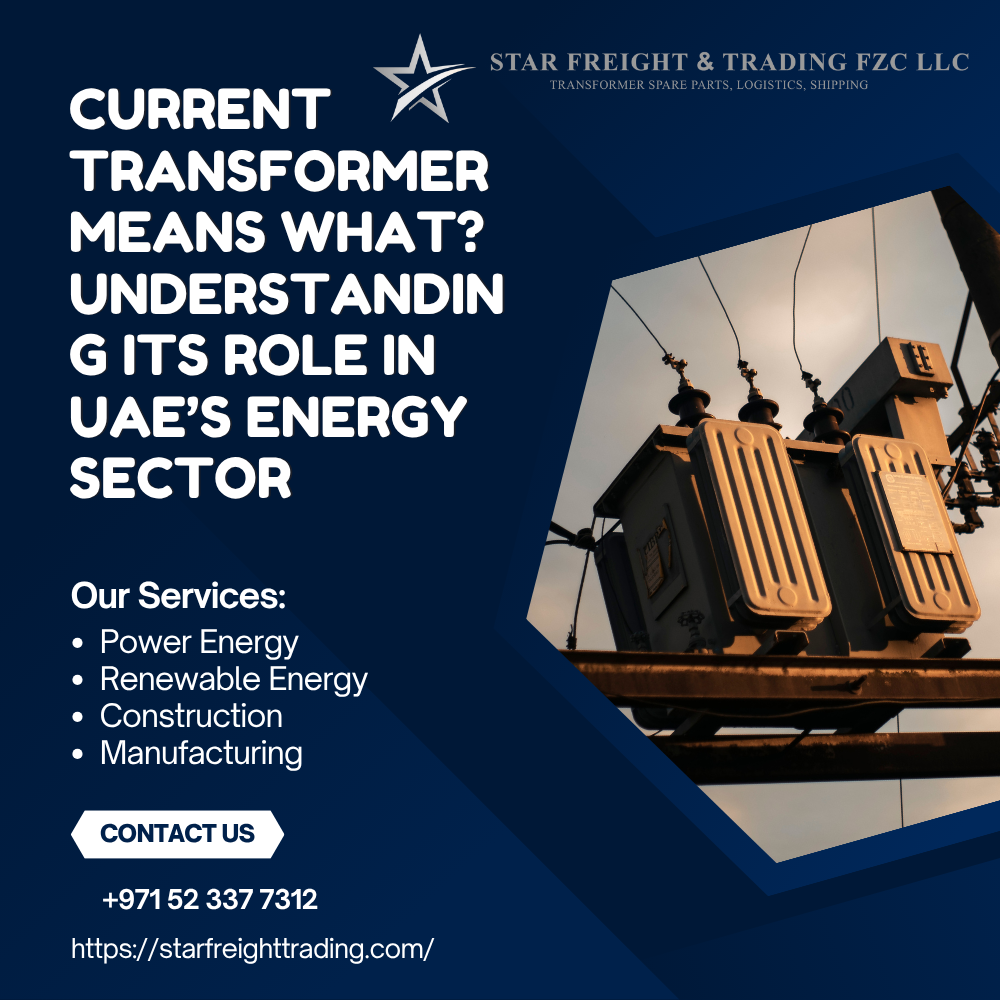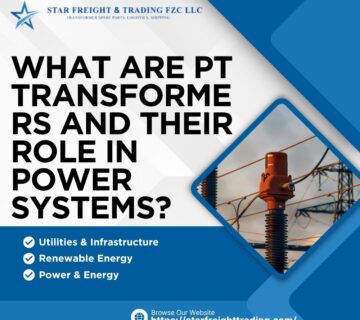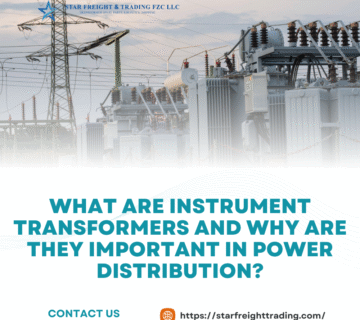Transformers are at the heart of every power distribution network, from utility grids to industrial facilities. In the UAE, they play a critical role in keeping energy flowing to high-rise offices, manufacturing plants, and infrastructure projects.
One key factor that determines how well a transformer performs — and how long it lasts — is the condition of its insulating oil. Over time, gases can form in this oil, and those gases tell an important story about the transformer’s health.
In this guide, we’ll explain what “oil gas” means in transformers, how it affects insulation and performance, and why companies like Star Freight Trading help businesses in the UAE manage this issue. Blogs
The Role of Transformer Oil
Transformer oil (also called insulating oil) serves two main purposes:
-
Insulation – Prevents electrical discharges between high-voltage components.
-
Cooling – Transfers heat away from the windings and core.
For both functions, the oil must be clean, stable, and moisture-free. Any contamination — especially in the form of gases — can compromise performance. Products
How Gases Form in Transformer Oil
Gases in transformer oil typically appear when the oil or the solid insulation (paper) decomposes. This can happen for several reasons:
-
Electrical faults – Arcing or partial discharge generates high heat, breaking down oil molecules.
-
Thermal overheating – Caused by overloading or poor cooling.
-
Aging – Over years of service, materials naturally degrade.
-
Moisture – Water contamination accelerates oil breakdown and gas formation.
The gases formed often include hydrogen, methane, ethane, ethylene, acetylene, carbon monoxide, and carbon dioxide.
Dissolved Gas Analysis (DGA) — The Diagnostic Tool
DGA is a standard test in transformer maintenance. It works like a health check-up: samples of oil are taken, gases dissolved in it are measured, and the results are compared to established patterns.
Different gases point to different problems:
-
Hydrogen (H₂) – Can indicate partial discharge or corona.
-
Methane (CH₄) & Ethane (C₂H₆) – Associated with low-temperature oil decomposition.
-
Ethylene (C₂H₄) – Linked to higher temperature faults.
-
Acetylene (C₂H₂) – Strong sign of arcing.
-
Carbon monoxide (CO) & Carbon dioxide (CO₂) – Suggest cellulose (paper insulation) degradation.
By interpreting the gas mix and concentrations, engineers can detect issues long before they cause a failure.
Impact of Oil Gas on Insulation
Insulation in transformers is not just about the oil — it’s also about the paper wrapping around windings. Gas formation affects insulation in several ways:
-
Reduced dielectric strength – Gas bubbles create weak points, increasing the risk of electrical breakdown.
-
Accelerated aging – The chemical reactions that form gases also degrade paper insulation faster.
-
Moisture increase – Some gas-producing faults release water, further reducing insulation performance.
Once insulation weakens beyond a certain point, the risk of catastrophic failure rises significantly.
Impact on Transformer Performance
Performance issues caused by gas in transformer oil include:
-
Overheating – Faults that cause gas also generate heat, leading to efficiency loss.
-
Increased partial discharge activity – Gas bubbles can create micro-gaps for discharge to occur.
-
Loss of service reliability – A compromised transformer may fail unexpectedly, disrupting operations.
In the UAE’s industrial and utility sectors, such downtime can be costly, both financially and operationally.
Preventive Maintenance Strategies
Managing gas in transformer oil starts with regular monitoring. Best practices include:
-
Routine oil testing – DGA every 6–12 months for critical transformers.
-
On-line gas monitoring – Continuous systems that trigger alerts if gas levels rise.
-
Oil filtration and degassing – Removes moisture and dissolved gases to restore oil quality.
-
Load management – Prevents overheating that accelerates gas formation.
In high-demand regions like the UAE, where equipment often operates near capacity, preventive measures are even more important.
Role of Star Freight Trading in UAE Transformer Maintenance
Star Freight Trading works with UAE utilities, contractors, and industrial clients to supply high-quality transformer oils, filtration systems, and diagnostic tools. They understand that controlling oil gas formation is not just about extending transformer life — it’s about preventing outages and maintaining grid stability.
Their services and products include:
-
Supplying IEC-compliant insulating oils.
-
Providing portable and fixed DGA monitoring equipment.
-
Offering oil purification and degassing solutions.
-
Advising on maintenance schedules for critical assets.
With their technical expertise, Star Freight Trading helps UAE businesses keep their transformers running efficiently and safely.
Real-World Example — Utility Substation in Abu Dhabi
A major substation in Abu Dhabi detected rising hydrogen and acetylene levels in one of its main transformers during a routine DGA. The gas profile indicated possible arcing.
Thanks to early detection, engineers were able to shut down the transformer, inspect the fault area, and repair damaged windings before a catastrophic failure occurred. Oil was filtered and degassed before the unit returned to service.
Without that gas monitoring program, the substation might have faced prolonged outages and costly repairs.
International Standards and UAE Regulations
Transformer oil management in the UAE follows both IEC standards and local regulatory guidelines. For oil gas analysis, IEC 60599 provides diagnostic methods, while IEC 60422 offers maintenance guidance.
Star Freight Trading ensures that the products and equipment they supply meet these standards, giving clients confidence in both safety and compliance.
Future Trends — Smarter Monitoring
The next stage in transformer asset management is integrating oil gas analysis with digital platforms. This means:
-
Real-time DGA sensors linked to SCADA systems.
-
AI-based fault prediction that uses gas trends to forecast potential failures.
-
Automated maintenance alerts for on-site teams.
As the UAE invests in smart grid technology, such advancements will become standard practice.
Conclusion
Oil gas in transformers is more than just a maintenance detail — it’s a vital indicator of insulation health and overall performance. In the UAE’s fast-paced, high-demand energy environment, early detection and management of gas formation can prevent costly failures and extend equipment life.
With quality products, diagnostic tools, and technical support, Star Freight Trading plays a key role in helping UAE businesses and utilities maintain transformer reliability and safety.
Frequently Ask Questions
Q. What is oil gas in transformers?
A. Oil gas in transformers refers to gases produced when insulating oil or paper degrades due to faults, overheating, or aging.
Q. Why does gas form in transformer oil?
A. Gas forms when electrical or thermal faults break down the oil, creating hydrogen, methane, acetylene, and other gases.
Q. How does oil gas affect insulation?
A. Gas bubbles weaken dielectric strength, speed up insulation aging, and increase the risk of electrical breakdown.
Q. How is oil gas in transformers detected?
A. Dissolved Gas Analysis (DGA) measures gases in the oil and helps identify the type and severity of faults.
Q. Can oil gas be removed from transformers?
A. Yes, oil filtration and degassing processes remove moisture and gases, restoring insulation quality.
Q. Why is oil gas monitoring important in the UAE?
A. With high demand and hot climates, UAE transformers face greater stress. Regular gas monitoring helps prevent outages and extend lifespan.





No comment